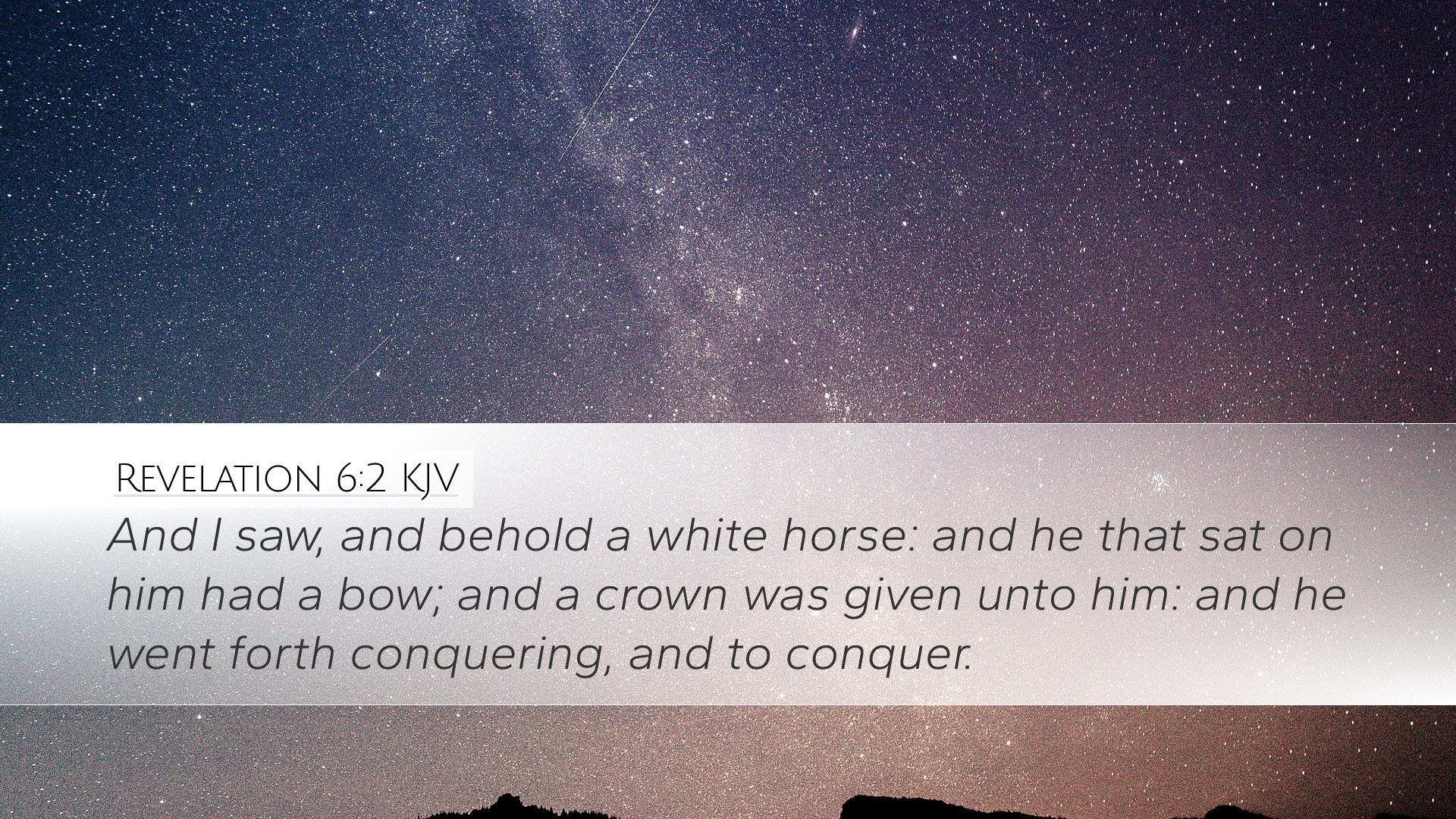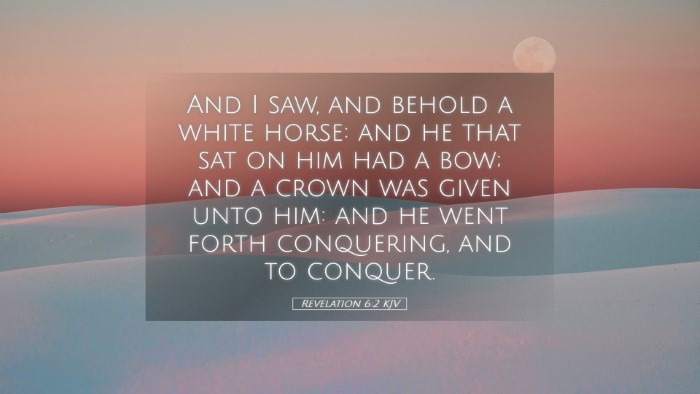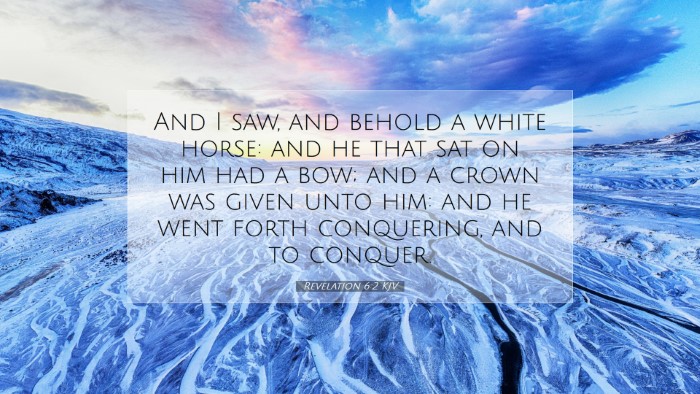Commentary on Revelation 6:2
Text of Revelation 6:2 (KJV): "And I saw, and behold a white horse: and he that sat on him had a bow; and a crown was given unto him: and he went forth conquering, and to conquer."
Introduction
The fourth chapter of the Book of Revelation introduces us to the majestic vision of the throne of God, leading to the opening of the seals in chapter six. The second seal, represented by the white horse, presents pivotal insight into the prophetic symbolism of end-time events. This commentary synthesizes insights from distinguished public domain commentators such as Matthew Henry, Albert Barnes, and Adam Clarke to provide an enriching understanding of this vital scripture.
Overview of Revelation 6:2
This verse marks the unveiling of the first seal, characterized by a rider on a white horse. Each element of this imagery carries profound significance, reflecting divine purpose and the unfolding of apocalyptic events. The rider's attributes—a bow and a crown—paired with his mission to "conquer" offers layers of interpretation concerning the nature of Christ's victory and the challenges faced by the Church.
Symbolism of the White Horse
Matthew Henry's Insights: According to Henry, the white horse symbolizes victory and triumph. In biblical literature, white often signifies purity and righteousness, which leads to the conviction that this rider represents a divine agent employed to carry forth God’s will in the world.
Contrast with Other Horsemen
Albert Barnes elaborates on the contrast between the white horseman and other horsemen introduced later: The subsequent riders bring war, famine, and death. In this sense, the first rider appears not as an agent of destruction but as an instrument of God’s sovereignty, executing divine judgment in the world. The vision indicates the commencement of a redemptive conquest.
The Rider's Attributes
-
The Bow:
Adam Clarke interprets the bow as a symbol of power and authority. Unlike a sword, which indicates direct confrontation, the bow signifies long-range capability, suggesting that the rider’s victories are achieved through strategy rather than sheer force.
-
The Crown:
Painting a picture of honor and control, the crown symbolizes the authority bestowed upon the rider. Barnes points out that the crown indicates official endorsement from heaven, affirming the rider's position in the divine hierarchy during tumultuous times.
-
The Mission to Conquer:
The phrase "went forth conquering, and to conquer" implies an ongoing mission. Each successful conquest complements the previous victories, demonstrating an escalating triumph in spiritual warfare. Henry suggests this conquest aligns with the Great Commission, highlighting the expansion of the Gospel's reach amidst adversity.
Theological Significance
This verse embodies significant eschatological themes. The unity of the church in its conquest, the cosmic struggle between good and evil, and the ultimate victory of Christ serve as a foundation for theological discourse.
Victory Through Christ
According to Matthew Henry, the victory indicated by the white horse symbolizes the triumph of Christ over sin and death. This underscores an essential tenet of the Christian faith—that believers participate in this victory through the power of the Holy Spirit.
Implication for the Church
This imagery of conquest serves to encourage the faithful, suggesting that despite trials and tribulations, the ultimate outcome is victory. Clarke emphasizes this, underscoring that the same power that leads the rider to victory is available to believers today, urging them to pursue holiness and mission vigorously.
Practical Application for Believers
As we reflect on Revelation 6:2, it ignites an innate call to engage actively in the Christian mission. The faithful are encouraged to live in the light of this victory, to proclaim the gospel boldly, and to stand firm in trials, knowing they ride alongside the triumphant one.
Spiritual Warfare
Church leaders and scholars discern that this scripture alludes to the reality of spiritual warfare. Believers must recognize the significance of the weapons at their disposal—both spiritual and communal—as they advance Christ's kingdom.
Conclusion
Revelation 6:2 introduces the majestic figure of the rider on the white horse, representing Christ's authority and victorious mission. Through the dual lens of historical context and prophetic fulfillment, the insights from Matthew Henry, Albert Barnes, and Adam Clarke enrich our understanding of this profound verse. It serves as an exhortation for pastors, students, theologians, and scholars to engage with the text and apply its truths within their faith contexts. The eternal assurance that the ultimate victory has been won in Christ provides both hope and impetus to pursue the divine calling in a world fraught with challenges.


